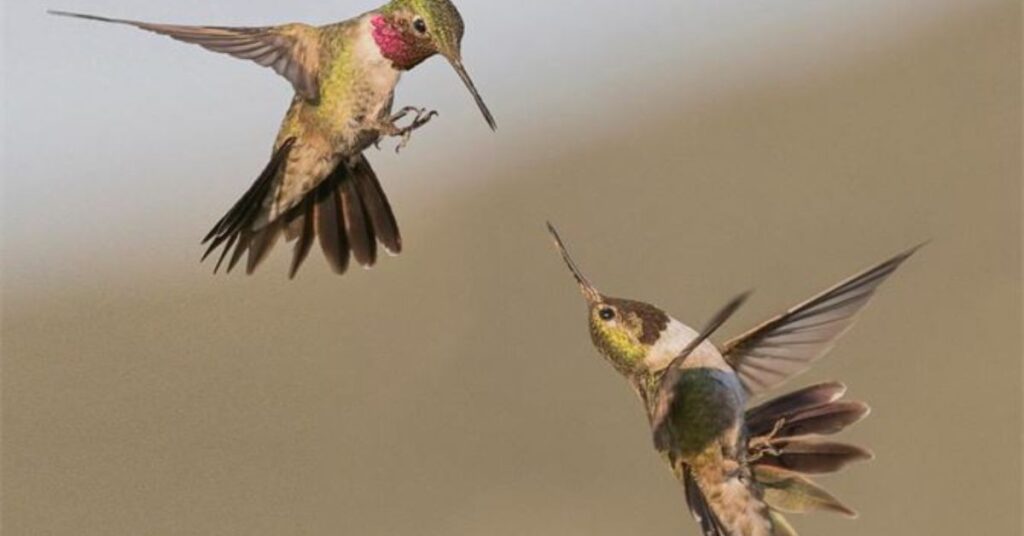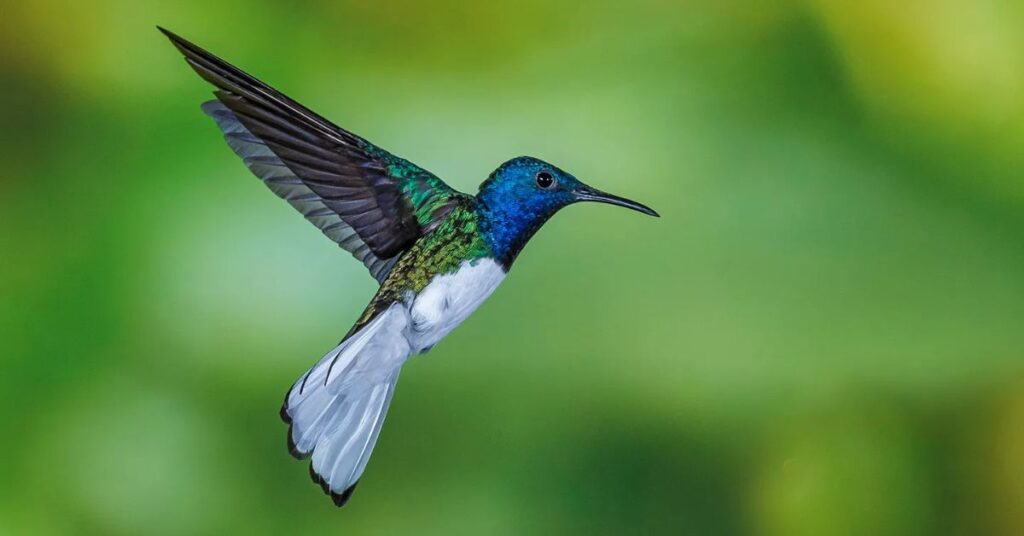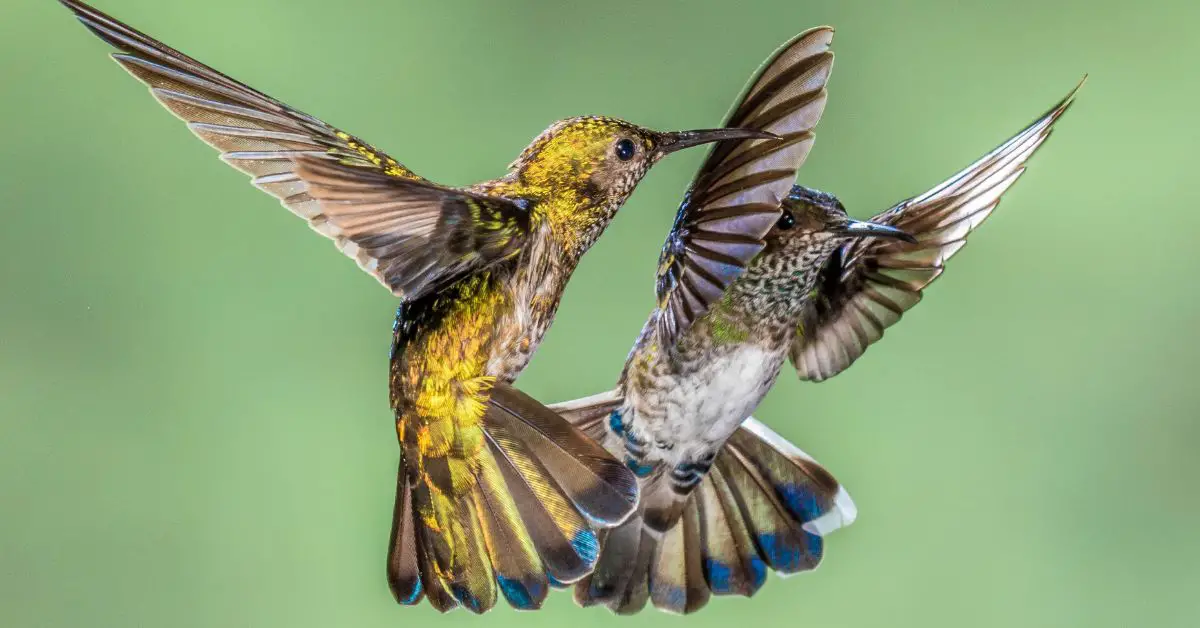The world of hummingbirds is filled with beauty, yet some species bring an unexpected twist: aggression. Bully hummingbirds are notorious for monopolizing feeders and pushing away their more timid counterparts, disrupting the balance in your garden. Recognizing and addressing the behavior of these aggressive hummingbirds is vital for maintaining a diverse avian community.
In this guide, we’ll delve into actionable methods to mitigate their dominance and create a nurturing environment for all birds visiting your yard.
Why Do Hummingbirds Fight
Hummingbirds fighting over feeders is a common yet fascinating spectacle that many bird enthusiasts witness. These tiny creatures, despite their delicate appearance, exhibit fierce territorial behavior, especially to secure access to food sources.

The vibrant colors of the feeders attract these birds, but it’s their instinctual drive for survival that ignites the skirmishes. Males are known to engage in aerial displays and aggressive dives to defend their chosen feeding territory from rivals.
The dynamics of hummingbird aggression can also reveal insights into their social structure. While they may appear solitary, these birds rely on a complex hierarchy influenced by factors like size, coloration, and even previous encounters. Observing hummingbirds fighting over feeder reveals not just a struggle for sustenance but also a dance of dominance and reproductive success.
The victor in these confrontations often secures the best feeding spots, ensuring their survival during critical periods when nectar sources are scarce.
How Can You Recognize Their Aggressive Behavior?
Aggressive Noises
Aggressive behavior can often be identified through various vocalizations and physical cues, particularly in the animal kingdom. In the context of hummingbirds, aggressive noises are a clear indicator of territorial disputes. When defending their hummingbird territory, these tiny creatures emit sharp, high-pitched calls that signal their intent to ward off intruders.

Observing the frequency and intensity of these sounds can provide valuable insights into their emotional state; a sudden increase in aggressive noises often signifies heightened stress or a challenge to their dominance.
Body Language
Recognizing aggressive behavior often hinges on the subtleties of body language, much like the fierce territorial displays of hummingbirds. When these small birds stake their claim, they exhibit rapid wing beats, darting movements, and a puffed-up chest, signaling to rivals that they will defend their space vigorously.
Similarly, humans may display tense postures, clenched fists, or narrowed eyes when feeling threatened or confrontational. By observing these non-verbal cues, you can gain insights into an individual’s emotional state and intentions.
By tuning into the nuances of body language akin to watching the fierce territorial battles of hummingbirds, we can navigate social dynamics with greater awareness and empathy.
Chases
Recognizing aggressive behavior, particularly in the context of hummingbird territory, can be fascinating and revealing. Hummingbirds are known for their vibrant colors and remarkable agility, but they also exhibit territoriality, especially during mating seasons.
When defending their space, a hummingbird may display aggressive posturing—fluffing up its feathers, extending its wings, or darting aggressively at intruders. This behavior serves as a warning to other birds, signaling that the territory is claimed and that any encroachment will not be tolerated.
Another key indicator of aggression in hummingbirds is the frequency and intensity of their vocalizations. A male hummingbird might emit sharp, rapid calls or chattering sounds to assert dominance over its territory.
The size of the territory can also influence aggressive behaviors; a larger area may encourage more frequent confrontations as multiple birds vie for control. By understanding these signs, bird watchers can gain a deeper appreciation for the intricate behaviors that define hummingbird territory and the survival strategies these remarkable creatures employ.
Fighting:
Recognizing aggressive behavior in animals can be quite fascinating, especially when observing fighting hummingbirds. These small but mighty creatures often engage in fierce territorial disputes, and their aggression can manifest through a series of distinct behaviors.
You might notice them performing aerial displays, where they dart rapidly through the air, showcasing their vibrant plumage while emitting sharp calls to assert dominance. This visual spectacle serves not only to ward off intruders but also to attract potential mates, highlighting the dual purpose of their aggression.

Another telltale sign of fighting hummingbirds is their physical confrontations. When two males vie for the same feeding territory, they may engage in rapid chases, where one bird attempts to outmaneuver the other with swift dives and sudden ascents.
These encounters can escalate into direct confrontations, with the birds clashing mid-air, occasionally leading to brief but intense bouts of pecking or striking with their beaks.
How To Stop Hummingbirds’ Territorial Behavior
Territorial behavior often stems from a deep-seated need for security and control, making it essential to address the underlying emotions at play. One effective approach is to foster open communication, encouraging individuals to express their feelings and concerns without fear of judgment.
This creates a safe space where insecurities can be acknowledged and worked through, rather than buried beneath defensiveness. By actively listening and validating each other’s experiences, relationships can shift from competition to collaboration, reducing the impulse to claim or guard spaces aggressively.
Additional Hummingbird Advice
To attract more hummingbirds to your garden, consider planting a diverse array of native flowering plants. These birds are particularly drawn to vibrant colors like red, orange, and pink, which mimic the hues of their natural food sources.
Incorporating tubular-shaped flowers, such as trumpet vine or bee balm, can provide easy access to nectar, ensuring a steady stream of these delightful visitors.
Observe how to clean a hummingbird feeder and fill it with an appropriate sugar-water solution is key point to attract more hummingbirds. A mix of one part sugar to four parts water is ideal, and it’s crucial to avoid using artificial sweeteners or food coloring, which can be harmful.

Regularly cleaning feeders every few days, especially during warmer months, prevents mold and fermentation, ensuring that the nectar remains fresh and safe.
Conclusion
Dealing with aggressive hummingbirds requires a combination of understanding their behavior and implementing strategic measures. By providing ample food sources, ensuring proper feeder placement, and using specific feeders designed to reduce territorial disputes, you can create a more harmonious environment for these beautiful birds.
Being mindful of the types of flowers you plant can help attract a wider variety of hummingbirds, which may lessen aggression as they compete for resources.
FAQ’s
Are Hummingbirds Territorial?
Yes, hummingbirds are indeed territorial, particularly during the breeding season. Male hummingbirds are known for their aggressive behavior when it comes to defending their feeding areas and nesting sites.
They will establish and guard a specific territory that they consider rich in nectar sources, often chasing away other males and even larger birds that encroach upon their space.
What Is The Most Aggressive Hummingbird?
The most aggressive hummingbird is often considered to be the Rufous Hummingbird (Selasphorus rufus). Native to the western regions of North America, this small bird is known for its fierce territorial behavior, especially during the breeding season.
- How To Keep Bees Away From Hummingbird Feeders - March 20, 2025
- How To Attract Owls To Your Yard - March 11, 2025
- Breeding Season For Wild Birds - March 9, 2025








